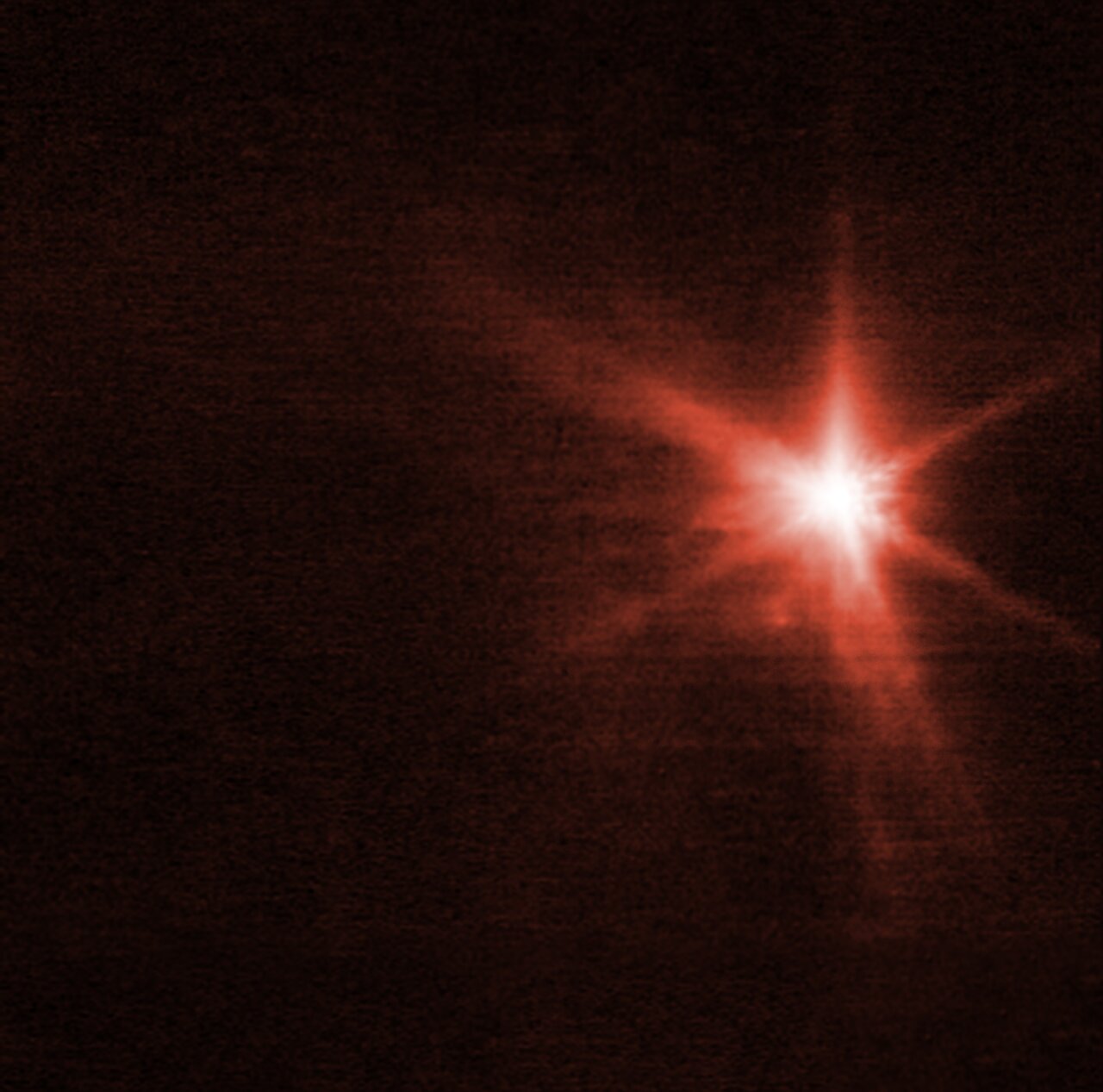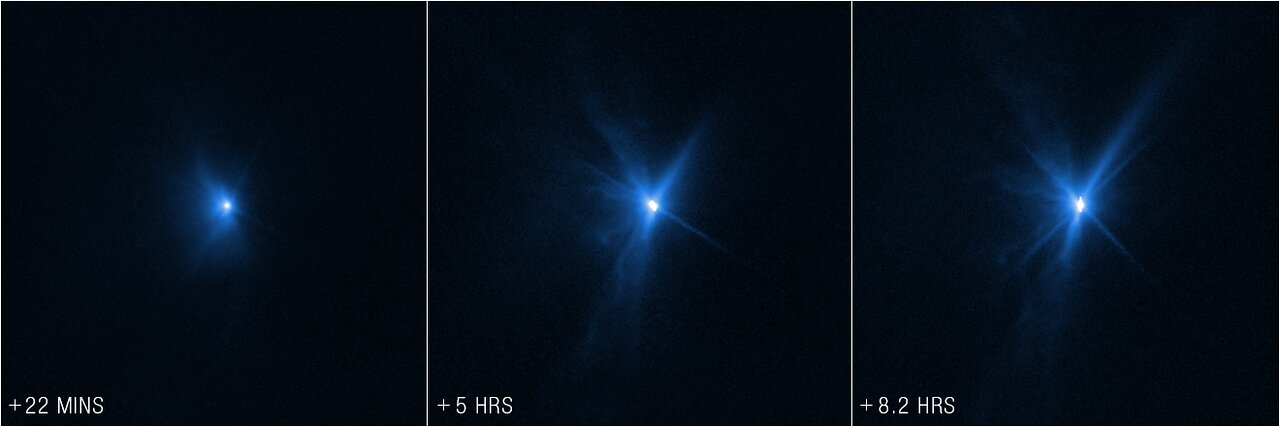James Webb Space Telescope Discovery
Clicking on each image will open the full resolution one. Try it!Clicking on "Raw images" image will yield all the relevant raw images.
Webb and Hubble Capture Detailed Views of DART Impact
For the first time, the NASA/ESA/CSA James Webb Space Telescope and the NASA/ESA Hubble Space Telescope have taken simultaneous observations of the same target.
These images, Hubble on left and Webb on the right, show observations of Dimorphos several hours after NASA’s Double Asteroid Redirection Test (DART) intentionally impacted the moonlet asteroid. It was the world’s first test of the kinetic impact technique using a spacecraft to deflect an asteroid by modifying its orbit.
Both Webb and Hubble observed the asteroid before and after the collision took place.
Scientists will use the combined observations from Hubble and Webb to gain knowledge about the nature of the surface of Dimorphos, how much material was ejected by the collision, how fast it was ejected, and the distribution of particle sizes in the expanding dust cloud.
In the coming months, scientists will also use Webb’s Mid-Infrared Instrument (MIRI) and Near-Infrared Spectrograph (NIRSpec) to observe Dimorphos further. Spectroscopic data will provide researchers with insight into the asteroid’s composition. Hubble will monitor Dimorphos ten more times over the next three weeks to monitor how the ejecta cloud expands and fades over time.
Hubble observations were conducted in one filter, WFC3/UVIS F350LP (assigned the colour blue), while Webb observed at F070W (0.7 microns, assigned the colour red).
Credit: NASA, ESA, CSA, and STScI
 Hubble/Webb Side-by-Side of Dimorphos Ejecta
Hubble/Webb Side-by-Side of Dimorphos Ejecta
 Hubble/Webb Side-by-Side (WFC3/NIRCam Compass Image)
Hubble/Webb Side-by-Side (WFC3/NIRCam Compass Image)
 Webb View of Dimorphos Ejecta (NIRCam)
Webb View of Dimorphos Ejecta (NIRCam)
 Webb Captures DART Impact
Webb Captures DART Impact
 Hubble Captures DART Impact
Hubble Captures DART Impact
 Side-by-side images of asteroid Dimorphos as taken by the DART mission (left) as well as the Didymos-Dimorphos asteroid system after impact from DART, as taken by the Hubble (top right) and Webb (bottom right) telescopes. DART’s view shows a close-up of the gray, rocky surface of the asteroid. Hubble’s view, colorized blue, looks like wispy blue streaks emanating from a glowing bluish white core. Webb’s view, colorized red, is positioned towards the bottom right of its frame. The core glows a reddish white, with red plumes spreading out from the center.
Side-by-side images of asteroid Dimorphos as taken by the DART mission (left) as well as the Didymos-Dimorphos asteroid system after impact from DART, as taken by the Hubble (top right) and Webb (bottom right) telescopes. DART’s view shows a close-up of the gray, rocky surface of the asteroid. Hubble’s view, colorized blue, looks like wispy blue streaks emanating from a glowing bluish white core. Webb’s view, colorized red, is positioned towards the bottom right of its frame. The core glows a reddish white, with red plumes spreading out from the center.
 This is a series of 9 observations taken by Webb’s NIRCam instrument, capturing the effects of the DART mission colliding with asteroid Dimorphos as a test of planetary defense. Webb wasn’t the only space telescope with eyes on this target — Hubble also caught the aftermath of the impact, marking the first time both telescopes were used to observe the same target at the same time. Webb took one observation of the impact location pre-collision, then several observations over the next few hours. The images from Webb’s NIRCam instrument show a tight, compact core, with plumes of material appearing as wisps streaming from the center of the impact site.
This is a series of 9 observations taken by Webb’s NIRCam instrument, capturing the effects of the DART mission colliding with asteroid Dimorphos as a test of planetary defense. Webb wasn’t the only space telescope with eyes on this target — Hubble also caught the aftermath of the impact, marking the first time both telescopes were used to observe the same target at the same time. Webb took one observation of the impact location pre-collision, then several observations over the next few hours. The images from Webb’s NIRCam instrument show a tight, compact core, with plumes of material appearing as wisps streaming from the center of the impact site.